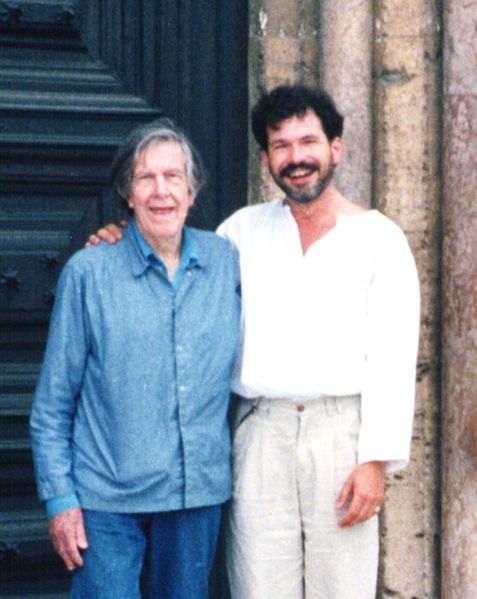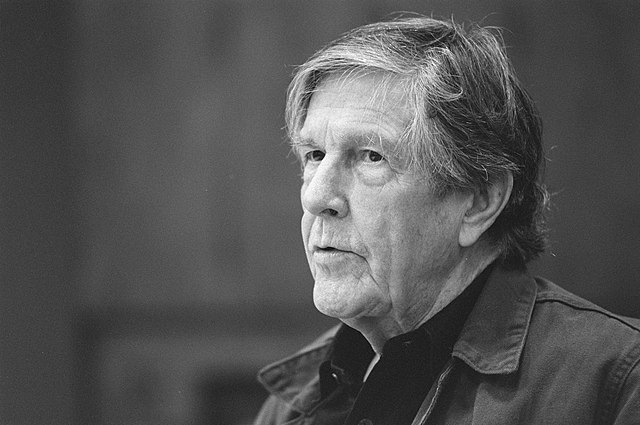4′33″ is a modernist composition by American experimental composer John Cage. It was composed in 1952 for any instrument or combination of instruments; the score instructs performers not to play their instruments throughout the three movements. It is divided into three movements, lasting 30 seconds, two minutes and 23 seconds, and one minute and 40 seconds, respectively, although Cage later stated that the movements' durations can be determined by the musician. As indicated by the title, the composition lasts four minutes and 33 seconds and is marked by a period of silence, although ambient sounds contribute to the performance.
John Cage in 1988
Sheet music for Allais' Funeral March, containing no musical notes
Daisetz Suzuki, whose approach to Zen Buddhism influenced Cage
Cage sitting in Harvard University's anechoic chamber, by which he discovered that absolute silence does not exist, inspiring him to compose 4'33"
John Milton Cage Jr. was an American composer and music theorist. A pioneer of indeterminacy in music, electroacoustic music, and non-standard use of musical instruments, Cage was one of the leading figures of the post-war avant-garde. Critics have lauded him as one of the most influential composers of the 20th century. He was also instrumental in the development of modern dance, mostly through his association with choreographer Merce Cunningham, who was also Cage's romantic partner for most of their lives.
Cage in 1988
John Cage (left) and Michael Bach in Assisi, Italy, 1992
Variations III, No. 14, a 1992 print by Cage from a series of 57
John Cage







